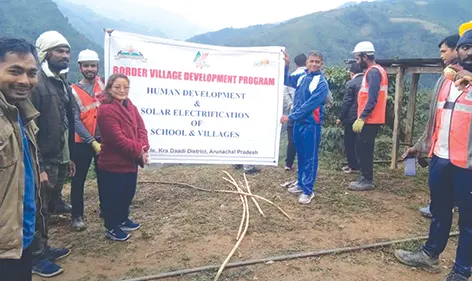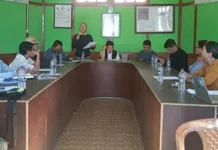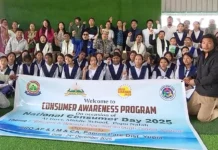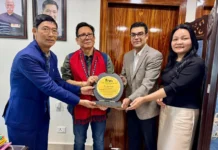ITANAGAR, 10 Jul: 26-year-old Jonny Rapo had never set foot outside Daporijo, a little town located in the Upper Subansiri district of Arunachal Pradesh. Although she had many dreams, she was hesitant to leave the familiarity of her home. Driven by her love for learning, she resolved to undergo the Art of Living Training in Bangalore. “As I sat at the airport, waiting for my flight to Bangalore, I had tears due to my overwhelming fear of the unknown and large crowds,” she recalls.
Today, after gaining proficiency in basic computers, and undergoing a training in solar installation at The Art of Living International Center, Bangalore, Rapo has not only overcome her fear of crowds but is able to conduct trainings for groups in her village. She is not only more confident but is also able to provide financially for herself and her family. What’s more? Rapo is not the only one from her region whose life has changed and gotten better financially, mentally and physically because of The Art of Living’s service initiatives.
Challenges faced by this region
It is known that the border district of Upper Subansiri is prone to harsh climate and even landslides. But very often electric poles get washed away during torrential rains plunging the entire region into darkness. The area’s isolation makes transportation difficult which means people have to wait long for external assistance to arrive, sometimes even up to a year or two. For example, Sari village, a distant village located on the banks of a river is so highly secluded that it takes three and half hours of travel to find another suitable location closer to the town to even charge a mobile phone!
The Art of Living Impact Through collaboration with the locals, solar panels were installed in over 80 households, government offices and police stations. Women were trained in natural farming, mushroom farming and marketing of the same. There was rampant use of urea, a high nitrogen-containing chemical fertilizer to grow crops but now they understand the value in using natural zero-cost inputs that are healthier for the farmer and consumer and safe for the soil health too.
Bank accounts and self-help groups were created to enhance their economic independence and stability.
The local unemployed youths received training in solar installation and solar designing. After acquiring the necessary skill sets, they were given opportunities to collaborate with the district power plant authorities to set up street lights and solar power plants. Thus, they no longer needed to bring in technicians for repairs from outside.
The Digital Literacy Project implemented in over 5 schools has been instrumental in redefining teaching methods and learning experiences. Youth empowerment programs of The Art of Living have not only helped the kids handle pressures effectively but also increased a sense of responsibility for the society among them. There is a marked improvement in school attendance.
With improved access to technology, teachers are now able to deliver better instructions and students learn more proficiently. Desktops, television sets and set top boxes provided by corporates like BYJU’S and Amazon in Yomcha village in West Siang helped improve the quality of education.
How was Art of Living successful in this transformation despite the harsh geographical challenges?
Inspired by Gurudev Sri Sri Ravi Shankar’s vision of a one world family, Ashok Harishchandre, project manager of the Human Development & Skill Development programs at The Art of Living in Arunachal Pradesh, travelled 15 hours on a bike traversing 239 kilometres to reach the border district where the Mishmi tribe lived. For a community that is close-knit and wary of outsiders, it took Harishchandre 15 days to convince the village leaders and community about the much-needed development projects that The Art of Living would help with. For 15 days, Harichchandre drove daily for 15 hours until he got the buy in from the community. With the help of the Sarpanch, a basic survey was conducted, and the initiatives needed to help develop the community were explained to the locals. But for that trust building was very important. This is where The Art of Living Happiness Program proved invaluable as it helped connect with people, and helped them feel uplifted, stress-free and a sense of belongingness.





